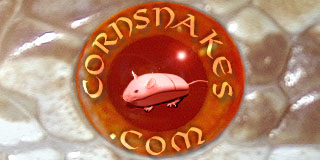captainjack0000
Student
Alright, so I thought I had this all sorted out, but then I did some reading, some people on other forums raised some interesting questions, and it made me think of some questions, and now I'm confused.
There are normal (or classic) corns:regular, wild type corn snakes. These are then divded into local types, such as Miami phase or Keys phase. I have heard the term, "phase" with these types. But then I see people get corrected when they use the term "Okeetee phase". And then there are Abbott's Okeetee, which is not a phase, but a certain bloodline from a certain breeder (Lee Abbott). But then, I hear of Carolina corns, which are not Okeetee? but regular regular corns?, which are somehow different than Alabamas because they're from a different place?
If we operate under the assumption that true versions of any of these depend upon the specific location from which it, or its lineage was collected, then what do we call any random corn snake that exhibits the colors often associated with these locales. And more to this end, exactly what are these characterisitcs?
For example, ignoring the locale requirement, I have read that an "Okeetee" is simply a classic corn with particularly bright reds and oranges (which sounds pretty subjective to me), and complete, un-broken black saddles. I have also read that the Abbott's Okeetee is this style, but with extra thick black borders. Is this the correct definition of an "Okeetee-looking" or "Abbotts Okeetee-looking" corn snake, and if not, then what is the correct definition? What are the correct physical traits of a Keys, Miami, and Alabama, and how do these differ from a regular regular?
For example, if I found a snake that looked like this in north Florida*
http://iansvivarium.com/morphs/thumbs/large/elaphe_guttata/keys/keys-a.jpg
what should I call it?
*I am not saying that I found one, or that I would find one, but this is a hypothetical.
There are normal (or classic) corns:regular, wild type corn snakes. These are then divded into local types, such as Miami phase or Keys phase. I have heard the term, "phase" with these types. But then I see people get corrected when they use the term "Okeetee phase". And then there are Abbott's Okeetee, which is not a phase, but a certain bloodline from a certain breeder (Lee Abbott). But then, I hear of Carolina corns, which are not Okeetee? but regular regular corns?, which are somehow different than Alabamas because they're from a different place?
If we operate under the assumption that true versions of any of these depend upon the specific location from which it, or its lineage was collected, then what do we call any random corn snake that exhibits the colors often associated with these locales. And more to this end, exactly what are these characterisitcs?
For example, ignoring the locale requirement, I have read that an "Okeetee" is simply a classic corn with particularly bright reds and oranges (which sounds pretty subjective to me), and complete, un-broken black saddles. I have also read that the Abbott's Okeetee is this style, but with extra thick black borders. Is this the correct definition of an "Okeetee-looking" or "Abbotts Okeetee-looking" corn snake, and if not, then what is the correct definition? What are the correct physical traits of a Keys, Miami, and Alabama, and how do these differ from a regular regular?
For example, if I found a snake that looked like this in north Florida*
http://iansvivarium.com/morphs/thumbs/large/elaphe_guttata/keys/keys-a.jpg
what should I call it?
*I am not saying that I found one, or that I would find one, but this is a hypothetical.


